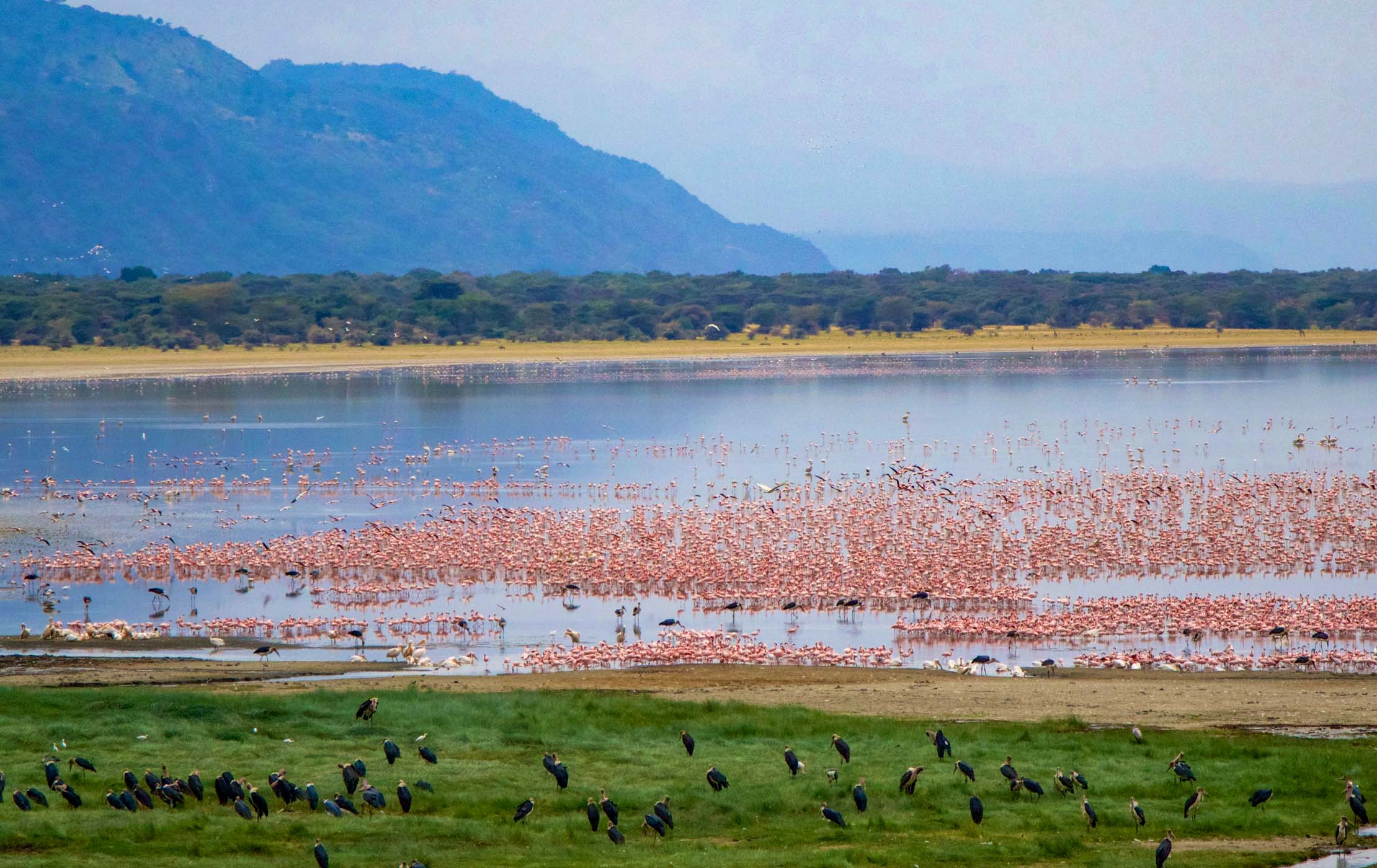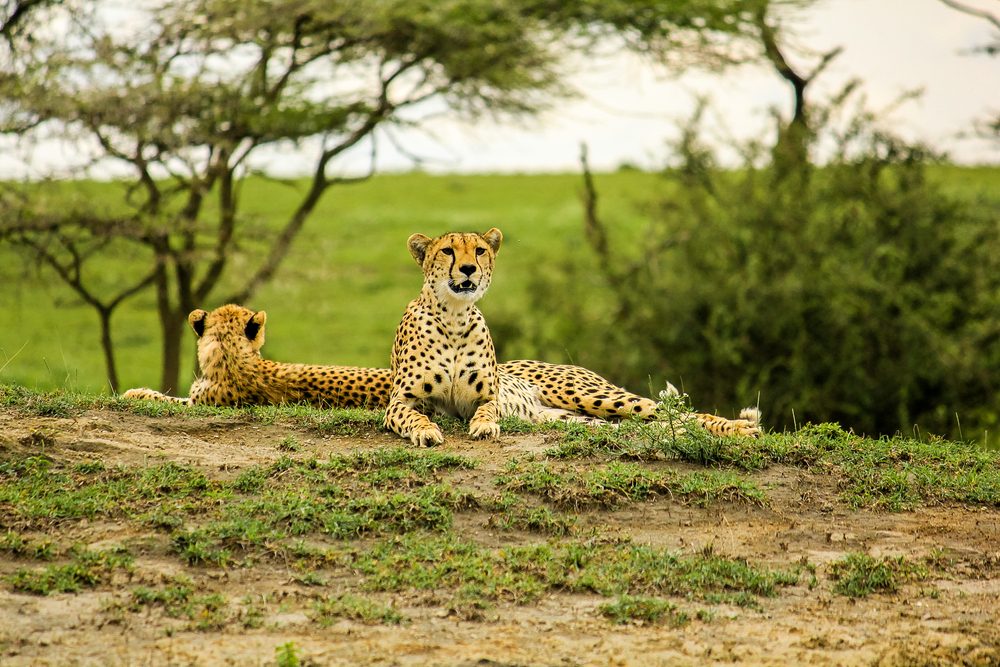Lake Manyara National Park

Lake Manyara National Park
Overview
Lake Manyara National Park, located in northern Tanzania, is a stunningly diverse landscape that spans 330 square kilometers (127 square miles). The park is famous for its shallow soda lake, which covers two-thirds of the area and attracts an abundance of wildlife. Situated at the base of the Great Rift Valley escarpment, Lake Manyara is known for its dramatic scenery, lush groundwater forests, and unique tree-climbing lions. The park is a popular choice for visitors looking for a short safari, easily accessible from Arusha and part of the Northern Safari Circuit.
Wildlife
Lake Manyara National Park is celebrated for its diverse wildlife despite its relatively small size. Visitors are likely to encounter large herds of elephants, buffalos, and troops of baboons—some of the largest in Africa. The park is renowned for its tree-climbing lions, often seen lounging in the branches of acacia trees, a rare behavior that distinguishes them from other lion populations. Hippos are frequently spotted wallowing in the lake’s shallow waters, and giraffes, zebras, and warthogs are common sightings across the grassy plains.
Birds
Birdwatchers flock to Lake Manyara National Park for its extraordinary birdlife, with over 400 recorded species. The alkaline lake is a sanctuary for thousands of pink flamingos that create a breathtaking pink haze along the shoreline during peak season. Other notable species include pelicans, cormorants, African fish eagles, and colorful kingfishers. The park’s diverse habitats, from groundwater forests to open savannahs, support a rich variety of bird species throughout the year.
Best Time To Visit
Lake Manyara National Park is a year-round destination, but the dry season, from June to October, is the best time for general wildlife viewing. During this period, the reduced foliage makes animals easier to spot as they congregate around permanent water sources. The wet season, from November to May, is perfect for birdwatching, as migratory birds arrive, and the landscape transforms into a lush, green paradise. The wet season is also the time when the park’s famous flamingos are most abundant.
Weather & Climate
Lake Manyara has a tropical climate with warm temperatures year-round, typically ranging between 15°C and 30°C (59°F to 86°F). The rainy season is divided into two periods: the short rains from November to December and the long rains from March to May. The dry season, from June to October, offers cooler and more comfortable temperatures, making it the preferred time for most safari-goers.
Getting There
Lake Manyara National Park is easily accessible, located about 120 kilometers (75 miles) from Arusha, which is approximately a 1.5 to 2-hour drive. The park is also just a short drive from the town of Mto wa Mbu. Many safari operators offer day trips to the park, often combining it with other destinations like Ngorongoro Crater and the Serengeti. For those who prefer flying, there is an airstrip at the park, with flights available from Arusha and other key safari hubs.

